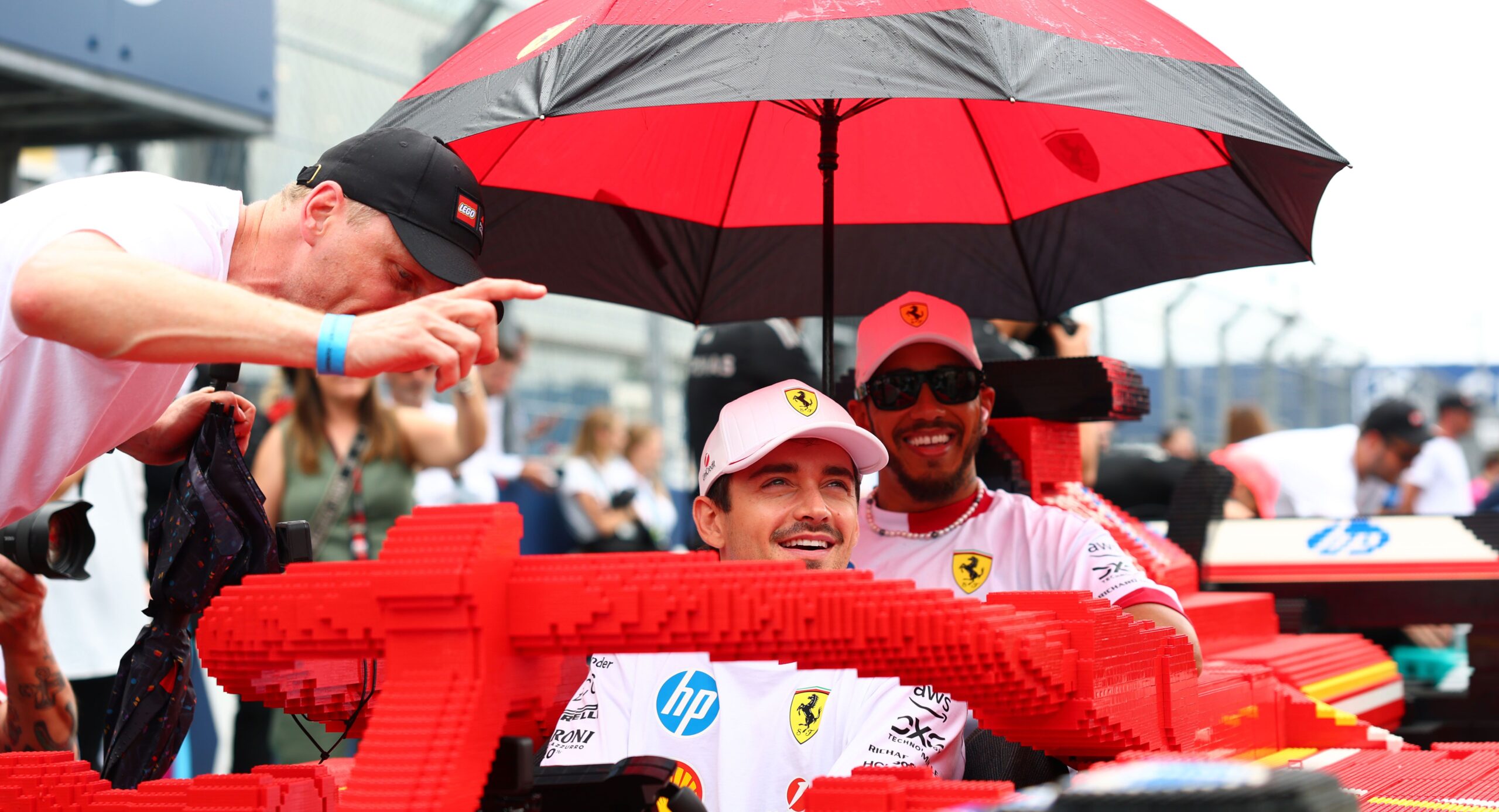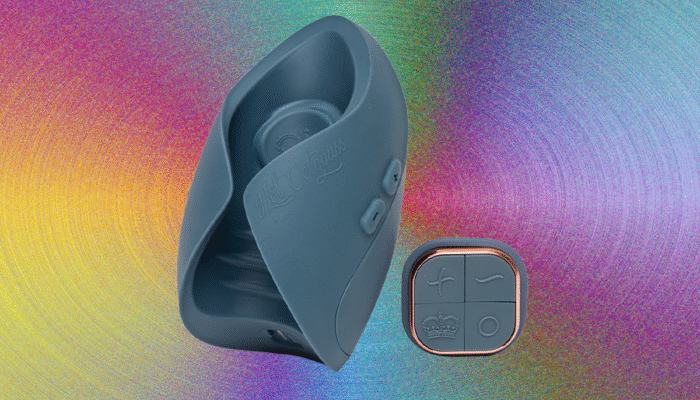At the Miami Grand Prix’s driver’s parade, the sport’s biggest stars rode in drivable Lego cars that took eight months to build. It was as awesome as it sounds.

Charles Leclerc and Lewis Hamilton at the Lego drivers parade during the F1 Grand Prix of Miami.PHOTOGRAPH: BRYN LENNON, FORMULA 1
All products featured on Wired are independently selected by our editors. However, we may receive compensation from retailers and/or from purchases of products through these links.
If you’ve ever attended a Formula 1 event, you’ll know: The cars are loud. The revving of an F1 car’s power unit can reach up to 140 decibels. That’s like standing next to a firework as it’s exploding. Now imagine there’s twenty of them, twenty fireworks going off simultaneously as the cars roar past you at 200 mph. The shock waves rip through the air and rattle the bones in your chest. It’s a full-body sensory experience. Most importantly, it rules hard.
It’s exactly that visceral experience that Lego wanted to tap into when, last year, it partnered with Formula 1 to create ten full sets of teams and drivers for its Speed Champions line. This year, it’s taking that a step further, and making them an awesome, full-sized reality. Today at the Miami Grand Prix, twenty drivers—including the celebrity drivers for McLaren, Mercedes, Red Bull, and Ferrari—introduced themselves to the crowd while driving lifelike Big Builds of their F1 cars in the driver’s parade.
All 10 Full Size Lego CarsPHOTOGRAPH: XAVIOR AARONSON; LEGO
PHOTOGRAPH: STEVEN TEE; GETTY IMAGES
The project to get here has been as big as it sounds. Over the course of eight months, a team of 26 Lego engineers took about 22,000 hours total to build the brick-based fleet. This took the total cooperation of each Formula 1 team. Lego designer Marcel Stastny noted that each F1 team provided complete IP with approvals for faithful reproduction. “We had great cooperation,” Stastny said, which, beyond the engineering, was a coup given that Formula 1 teams guard the car’s designs so closely.
Before their track debut, the cars were displayed in the Lego Garage at the west campus of Hard Rock Stadium in Miami, Florida. I had the opportunity to get inside the McLaren car, which is made from the exact same standard Lego bricks that your kids can buy at home, made with Lego’s famously tight tolerances. It feels … well, as solid as a brick, which makes sense given that the car weighs over 3,000 pounds. You can lean on it or slap it with your hand without worry, although I’m pretty sure someone would’ve stopped me if I’d tried to kick it. There are some surprisingly faithful features. It might not have a real V6 engine (in fact, each car can only go 12 mph), and the drag reduction system (DRS) might not work either, but those are real F1 Pirelli tires set in a Lego hub.
PHOTOGRAPH: HECTOR VIVAS; GETTY IMAGES
PHOTOGRAPH: HECTOR VIVAS; GETTY IMAGES
PHOTOGRAPH: HECTOR VIVAS; GETTY IMAGES
Attention to Detail
F1 superfan and Lego ambassador Nicole, who goes by the name GirlBricksALot, concurs. “Down to the spoons for the side view mirrors, the tiles that are used for the camera mount on top, even the cheese slope piece on the front wing—they’re identical,” she says. “Every part of the car is satisfying.”
This isn’t Lego’s first Big Build in this space. In 2018, its designers brought that same commitment to authenticity with the drivable 1:1 Lego Bugatti made from Lego Technic elements (that’s Lego’s engineering line with rods, gears, and axles). Last year, McLaren driver Lando Norris took a Lego Technic P1 all the way around the course at Silverstone. But building ten authentic, driveable cars in eight months has been a feat on a different scale.
Each one of these is, of course, a masterful marketing operation, with Lego keen to promise this level of attention to detail has filtered down to the versions that you can build at home for $30—bringing racing fans closer to the cars they might never see in real life. A bit like Drive to Survive, it feels that Lego Speed Champions is serving as an entryway into a sport that has been opaque and inaccessible to so many for most of its history—something Nicole says she experienced as a young fan.
“[As a kid], I would follow F1 with articles or YouTube snippets,” she said. “You couldn’t even watch it. It’s impossibly hard to get into the sport as a driver, and it was impossibly expensive to go to.”
PHOTOGRAPH COURTESY OF ADRIENNE SO
Today, the sport doesn’t feel as inaccessible. I myself had a number of surprises. For a sport that has traditionally catered to such a wealthy clientele, it requires a surprising amount of physical endurance, whether that’s walking 11,000 steps to get from the gate to your section, broiling in the sun in your seat, or surviving for 8 hours on ice cream with chocolate sauce because you (I) refuse to wait in any more lines.
The second surprise was just how much fun everyone was having (not alcohol-related, although there was plenty of that). There are way more people wearing funny hats shaped like cars or wings than I expected, way more kids shrieking at the vibrations in the turn bridges. When it started raining during the practice rounds, I hid under an umbrella until I noticed fans gathering around the turns cheering whenever a driver threw up a high sheet of water, like Shamu. Both Formula 1 and Lego have a rich history and a deeply loyal fan base. It was especially easy to notice during the driver’s parade that both are just … fun.
My 7-year-old son might not be able to tolerate the heat and walking that a Grand Prix requires (I can barely tolerate it, and I’m in my 40s) but he’s currently on his 6th Formula 1 set and counting. It’s pretty awesome that teenage prodigy Kimi Antonelli rode in a car that looks just like his.
Adrienne So is a senior commerce editor for WIRED, where she reviews health and fitness gear. She graduated from the University of Virginia with bachelor’s degrees in English and Spanish and runs, rock climbs, and sings karaoke in her free time. She lives in Portland, Oregon with her husband, two … Read more





